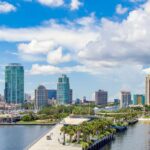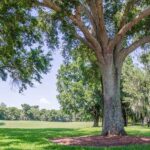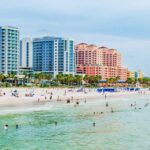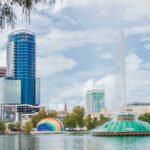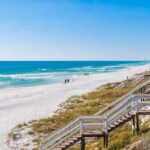Location: Southeast to Southwest Florida
Additional Resources: Official Website
Welcome to the country’s largest subtropical wilderness! The biodiversity at the Everglades National Park is truly unfathomable and must be experienced first hand. It serves as home to many endangered species such as the American crocodile, manatee, American alligator, sea turtles, birds, Florida panther, and many types of plants. If you are eager to learn and experience the wildlife in a way that you will never forget, this is the place for you. They have ranger programs, tours, books, and many other activities to educate visitors on topics related to the different species and their environment. If you become an expert, you could even volunteer in aiding their conservation efforts.
Everglades National Park is a place that is filled with constant action. From serious scientific projects by professionals to leisure activities by average civilians, the park is constantly in motion.
Activities for Visitors
The Everglades National Park offers many activities for its visitors. Many reviews describe it as the perfect place to vacation if you enjoy the outdoors. Activities include:
- Biking: There are 3 areas that you can choose from. Pedal through Shark Valley, a scenic loop that extends for 15 miles; the Flamingo Trails, mosquito infested trails so be prepared; and the Pinelands, a 43 mile network of trails that are older than the Everglades National Park itself. Bicycles are also available for rent on a first come first serve basis.
- Bird watching: Over 300 different species to gaze at. Stop by one of the visitor centers and they will tell you where the most recent bird sightings are taking place.
- Boating: a third of the Everglades is covered in water. This provides many bodies of water for people to boat in. It is emphasized that only skilled boaters should go out into the wild for the safety of both the people and animals. Safety courses are offered on site, as well as guided boat tours.
- Hiking: An abundance of trails are offered for hiking. You can choose from any of the trails in Shark Valley, Flamingo Trails, Gulf Trails, Pine Island Trials, and a few others. Be sure to check at a visitor center before hiking as there are a few trails that are not maintained due to federal regulations for endangered species. Those trails must be hiked at one’s own risk.
- Camping: Camping is available year round in the frontcountry and backcountry. However, the months of June through November are known as the wet season, and it has been cautioned that camping during this time can be difficult and uncomfortable.
- Fishing: Both fresh water fishing and salt water fishing are possible at Everglades National Park. They do, though, require separate fishing licenses. There are some rules and regulations that can be obtained through their website or at any visitors center.
- Canoeing/Kayaking: There are many opportunities to paddle at the Everglades National Park. Trails range from a few hours to days depending on their length and complexity. Canoes and Kayaks are available for rent, but you can also bring your own. In addition, you can hire a guide to lead you on your trip.
Guided Tours
Everglades National Park has a variety of guided tours to choose from, including biking, airboat, photography, hiking, ecology, canoeing and kayaking, and many more. The guided tours are there for the convenience of the visitor. This national park is 1.5 million acres and can be a bit much for any escapade. A guide can be hired to facilitate the process for the visitors by providing guidance during a time that fits the visitor’s schedule.

Events
Various events are offered year-round for the guests. There are junior ranger programs for the kids so that they can learn about the biodiversity at the Everglades National Park and become educated on ways to protect the land and species. To learn about any upcoming events and activities, visit the park’s website and search under calendar.
Education
Educating the public is one of the goals at Everglades National Park. Through their website, one can order books or read through supplemental materials to learn about the history and culture of the park. People can educate themselves on topics such as the Native Americans and the wars that occurred long before the parks establishment, or the historic roads and treasured archaeological sites within the area. They even have their own newspaper, which is published twice a year for the purpose of preparing future visitors for their exciting trip.

Many resources are available in the Florida Everglades website. By visiting, people can learn about the research projects and programs that are currently taking place. There are many topics to choose from, including invasive plants, invasive animals, aquatics, climate change, wild fires, and various more.
Scientific Research

Over the decades, these Everglades have become grounds for various scientific experiments and research that vary over a wide range of disciplines and subjects. The projects pertain to wildlife, hydrology, quality of water, preservation of species, and botany. The South Florida Natural Resources Center is in charge of all the scientific research that is conducted within the park. They will grant research permits to individuals from universities, non-government organizations, and local, state, and federal agencies, so long as their studies help to enhance the understanding of the parks wildlife, environment, culture, and values, or to analyze the effects the use of the park has on the ecosystem.
The South Florida Natural Resources Center will also contribute in the funding of projects that are focused on ecosystem restoration in south Florida. They have an extensive collection of publications on decades of research that has been conducted in the local area. All research is openly available for the public to view.
Invasive Species

Invasive species are species that are not native to a certain region and whose presence is causing ecological harm to the area in which they currently reside. The Everglades National Park is teaming with nonnative species, and it is becoming a growing concern. There are exotic fishes that are feasting on the natives ones. Plants, such as the melaleuca trees, that are overtaking their indigenous counterparts. Not to forget, the presence of the Burmese Pythons who are devouring all the other species that they come in contact with. The Everglades National Park has been bombarded with invasive species, and they are leaving the park’s ecology in shambles.
Invasive species are becoming a growing concern in the Everglades because they disrupt the natural balance of the ecosystem in an environment. Since the species are not native, they do not have any natural known predators and thus gain a competitive edge over the native species in the fight for resources. They can increase their reproductive success and have drastic effects on other population. The Everglades National Park has already reported that invasive species are “…threatening the integrity of south Florida’s native communities”, and extensive research has revealed a decline in many of its native animals. It seems that nonnative species are here to stay, but the South Florida Natural Resources Center is working with various researchers and organizations to help control their population.
Image Credits & Copyright
National Park Services

